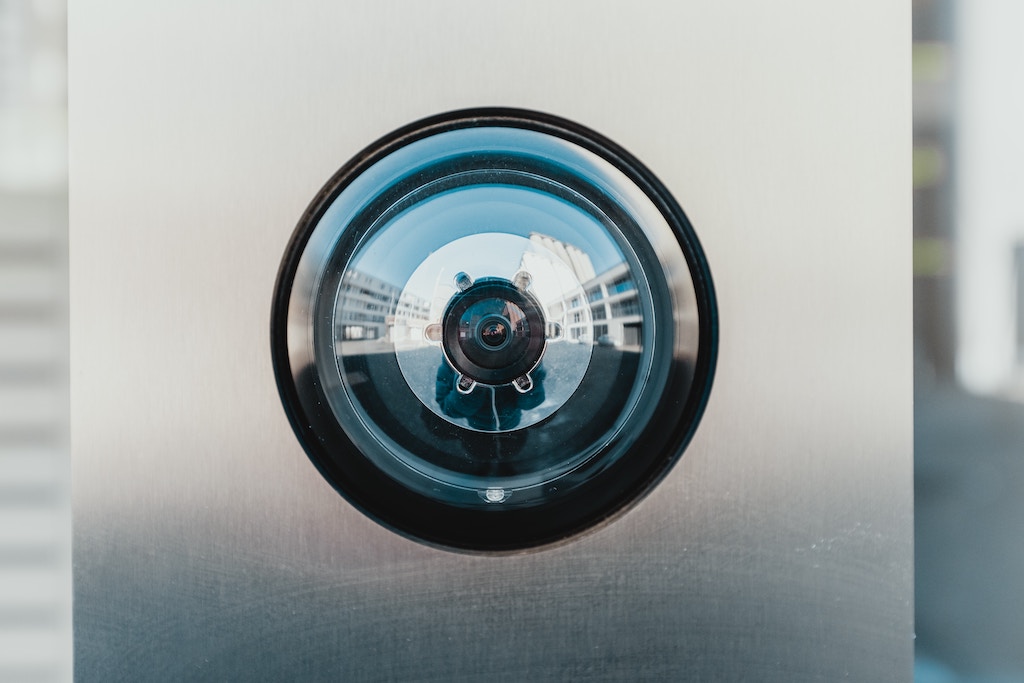Keyless entry door locks have become increasingly popular in recent years, changing how we secure our homes and businesses. These innovative devices offer enhanced security, convenience, and control over access. In this guide, we get into the world of keyless entry door locks, exploring how they work, the types available, their benefits, what to consider before purchasing, and maintenance tips to ensure their longevity.
What is a keyless entry door lock?
A keyless entry door lock, also known as a smart lock, is a device that allows you to unlock and lock your door without the need for a traditional key. Instead, it utilizes advanced technology such as electronic keypads, biometrics, or Bluetooth connectivity to grant access. These locks provide an alternative and more secure method of entry while eliminating the need to carry physical keys.
How do keyless door locks work?
Keyless door locks employ various mechanisms to grant access.
Keypad door locks
Keypad door locks are one of the most common types of keyless entry systems. These locks feature a numeric keypad mounted on the exterior of the door. Users can input a unique code consisting of numbers, typically four to eight digits long, to activate the lock mechanism and gain entry. The code serves as the digital “key” to unlock the door.
Keypad locks offer convenience and flexibility in access management. They allow users to create multiple codes, making granting access to family members, friends, or service providers easy without needing physical keys. Each individual can have their unique code, and these codes can be easily changed or deleted as needed. This feature eliminates the hassle of key duplication and provides an added layer of security.
Biometric door locks
Biometric door locks utilize advanced fingerprint recognition technology to authenticate users. These locks store authorized fingerprints in their memory and compare them to the presented fingerprint for access. When a user places their finger on the biometric scanner, the lock analyzes the unique patterns and ridges of the fingerprint to verify the person’s identity. If the fingerprint matches an authorized print, the lock mechanism is activated, allowing entry.
Biometric locks offer a high level of security as fingerprints are unique to each individual and difficult to replicate. They provide a convenient and reliable means of access, as users do not need to remember codes or carry physical keys. Biometric door locks are ideal for situations where strict access control is required or when multiple individuals need frequent and convenient entry.
Bluetooth-enabled door locks
Bluetooth-enabled door locks take advantage of wireless connectivity and smartphone technology. These locks can connect to your smartphone or other authorized devices via Bluetooth. By using a dedicated mobile app, you can remotely control and monitor the lock, granting access to yourself or others within proximity.
With Bluetooth locks, you can unlock or lock the door using your smartphone. The app acts as a digital key, sending a secure Bluetooth signal to the lock to initiate the unlocking or locking. Some Bluetooth locks offer additional features, such as auto-unlock when your phone is in close range, eliminating the need to interact with the lock manually.
Bluetooth-enabled locks often provide advanced access control options. You can grant guests or service providers temporary access by sending them virtual keys or codes via the app. You can also receive notifications whenever the lock is accessed, providing real-time information about who enters or exits your property.
Types of keyless door locks
Besides the technologies mentioned above, other types of keyless entry door locks are available in the market.
- RFID locks: These locks use Radio Frequency Identification (RFID) technology to grant access. Users carry RFID cards or fobs, swipe or tap near the lock to unlock the door.
- Remote control locks: These locks function similarly to traditional car remote systems. Users can unlock or lock the door with a button on a dedicated remote control.
Benefits of keyless entry locks
Keyless entry door locks have gained popularity due to their numerous benefits.
Enhanced security features
Keyless locks provide an enhanced level of security compared to traditional locks. One significant advantage is the elimination of vulnerabilities associated with physical keys. With keyless entry, there is no risk of unauthorized key duplication, as there are no physical keys to copy. This reduces the potential for break-ins or unauthorized access.
Many smart locks offer advanced security features such as real-time access notifications. These notifications can be sent to your smartphone or email, allowing you to monitor and track who enters and exits your property. This provides an extra layer of security and peace of mind, especially when you are away from home or managing access to a commercial property.
Convenient access control options
Keyless entry provides convenient access control options for homeowners, property managers, and businesses. Instead of distributing physical keys to family members, guests, or employees, you can grant access through digital means. This eliminates the need for key management, reduces the risk of lost or stolen keys, and minimizes the inconvenience of key distribution and retrieval.
For example, in residential settings, you can assign unique access codes to family members, allowing them to enter the home without needing physical keys. In commercial properties, you can provide temporary access codes or virtual keys to contractors, delivery personnel, or other authorized individuals, simplifying access management and ensuring controlled entry.
Flexibility and customization
Keyless locks offer flexibility and customization options to suit your specific needs. Many smart locks come with programmable features that allow you to customize access schedules. You can set specific times when certain codes or virtual keys are active, granting access only during designated periods. This is particularly useful for granting temporary access to service providers or housekeepers.
Some keyless locks can integrate with home automation systems, allowing you to control your lock remotely using voice commands or mobile apps. This integration lets you incorporate your lock into a smart home ecosystem, providing a seamless and convenient user experience.
Keyless entry considerations before purchasing
Before purchasing a keyless entry door lock, it’s important to consider the following factors:
- Battery life: Keyless locks rely on batteries for power. Select a lock with reliable battery life to ensure uninterrupted operation. Look for locks with long-lasting battery performance and consider models with low-battery indicators or alerts. This way, you will be notified when the batteries are running low, allowing you to replace them before they die completely and potentially leave you locked out.
- Compatibility with existing doors/hardware: Check the compatibility of the keyless lock with your existing doors and hardware. Some locks require specific door preparations or modifications, such as certain door thickness or pre-drilled holes. Ensure that the lock you choose is suitable for your door type and can be installed without major alterations. It is recommended to consult the lock manufacturer’s specifications and installation instructions to ensure compatibility.
Considering these factors, you can make an informed decision when selecting a keyless entry door lock that meets your security needs and integrates seamlessly with your existing infrastructure.
Tips to maintain your keyless door locks
Maintaining your keyless door locks is essential to ensure their proper functioning and longevity.
- Regular cleaning: Regularly clean your keyless door lock’s keypad or biometric scanner to remove any dirt, dust, or debris that may accumulate over time. Use a soft, lint-free cloth or a mild cleaning solution recommended by the lock manufacturer. Avoid using abrasive cleaners or harsh chemicals that may damage the surface of the lock. Cleaning the keypad or scanner helps maintain accurate readings and prevents lock functionality interference.
- Battery replacement: Keyless door locks rely on batteries for power, so staying proactive and replacing them before they completely deplete is crucial. Most locks will provide a low-battery warning through LED indicators or audible alerts. When you receive a low-battery notification, promptly replace the batteries with fresh ones to ensure uninterrupted operation. Keep spare batteries on hand to quickly replace them when needed. Regular battery replacement prevents lockouts and ensures your keyless door lock remains functional.
- Firmware updates: If your keyless door lock supports firmware updates, it is important to check for updates from the manufacturer periodically. Firmware updates often include security patches, bug fixes, and new features that improve the overall performance and security of the lock. Manufacturers may release these updates to address vulnerabilities or enhance functionality. Check the lock manufacturer’s website or app for firmware updates and follow the installation instructions. Keeping your lock’s firmware up to date ensures it benefits from the latest advancements and remains secure against potential threats.
- Addressing common issues: Like any technology, keyless door locks may encounter common issues over time. Some common issues include keypad or scanner malfunctions, connectivity problems, or difficulties with battery life. If you encounter any issues with your keyless lock, consult the lock manufacturer’s troubleshooting guide or contact their customer support for assistance. They can guide you on resolving common problems and may offer specific recommendations for your lock model.
- Professional maintenance: In some cases, seeking professional maintenance for your keyless door lock may be necessary. If you encounter persistent issues or if the lock requires a more in-depth examination or repair, contacting a professional locksmith or the lock manufacturer’s authorized service center can help ensure proper maintenance and resolution of any complex issues.
Keyless entry door locks have transformed how we secure our homes and businesses, offering advanced features, convenience, and peace of mind. By understanding how keyless locks work, exploring the different types available, considering key factors before purchase, and implementing proper maintenance, you can enjoy the benefits of these innovative devices for years to come. Upgrade your security and embrace the future of access control with keyless entry door locks.


